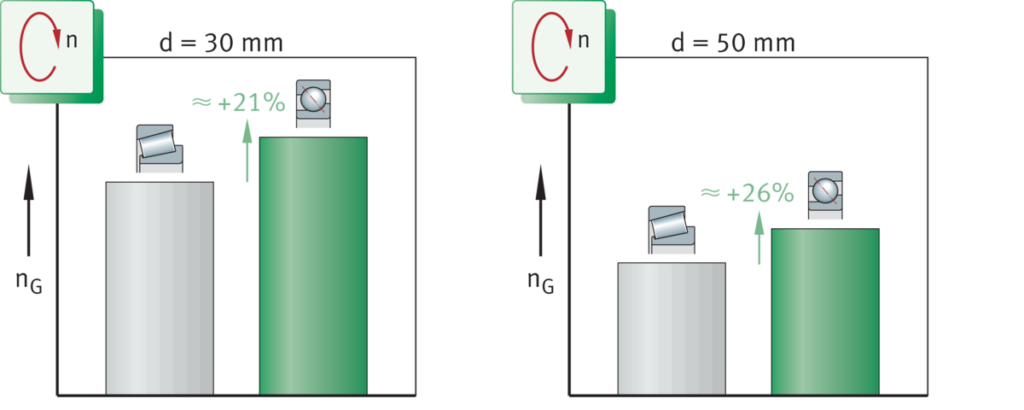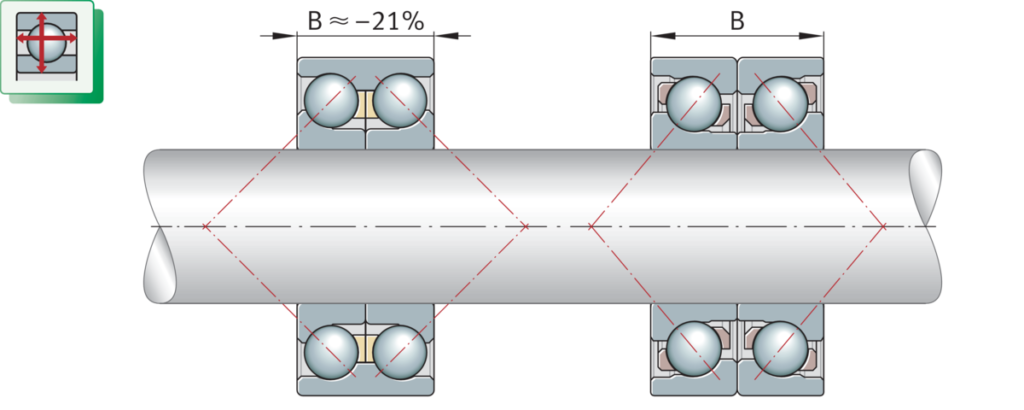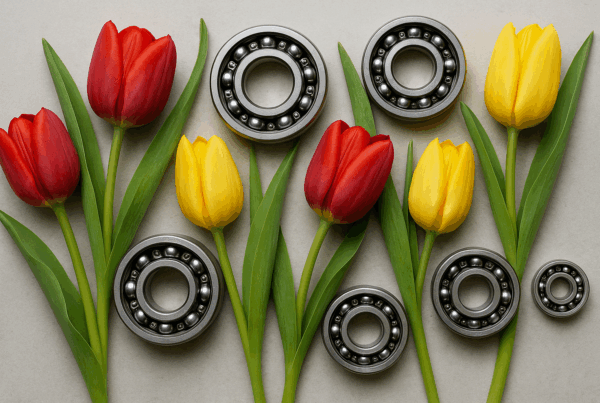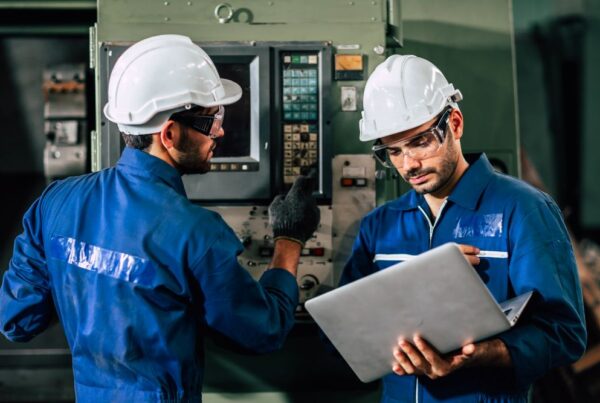In the case of angular contact bearings, the force acts on the bearing at a certain contact angle (oblique to the radial plane), which transmits it from one runway to another. This can be done by the two treads being offset in a plane relative to the bearing axis, so that the bearing can withstand radial and axial loads simultaneously.
As the angle of action increases, the axial load capacity increases, so angular contact bearings are more optimal to withstand high axial forces than deep groove ball bearings. They are available in single-row design as single bearings or universal bearing pairs, as well as in double-row versions.ű
Single row angular contact ball bearings are particularly suitable where:
- bearing arrangements must support combined loads, – i.e. radial and axial loads acting simultaneously
- moderate to high loads are present on one side
- rigid axial guidance is required
- the bearing arrangement must be axially clearance-free or preloaded
- high speeds are required under higher radial and axial loads
- the bearing arrangement is to run quietly in addition to meeting the requirements stated above
Speed comparison of angular contact ball bearing and tapered roller bearings
nG = limiting speed

Double row angular contact ball bearings are particularly suitable where:
- the design envelope is not sufficient under high loads for a pair of single row angular contact ball bearings
- high radial and axial loads are acting simultaneously
- tilting moments must also be supported
- a relatively rigid bearing arrangement is required
- the bearing arrangement is to run quietly in addition to meeting the requirements stated above
Double row angular contact ball bearing – comparison of design envelope with bearing set composed of single row angular contact ball bearings
B = total width of bearing or bearing set

If you need a solution like this or have any questions, feel free to contact our expert colleagues!
Source: medias.schaeffler.hu



